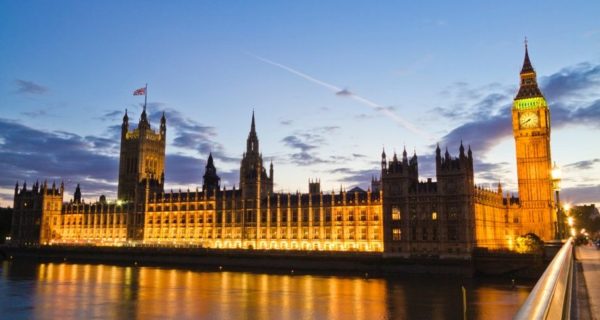On 22nd of July 2013, the United Kingdom of Great Britain and Northern Ireland (and 15 countries of the British Commonwealth) welcomed a new addition to their Royal family. Prince George Louis Alexander will, if everything goes to plan, probably ascend to the throne in seventy or eighty years’ time.
The nation and position he has been born into is a curious, quite unique one constitutionally and I am going to do my very best now to explain to you, why that is so.
The United Kingdom consists of four countries; in order of size: England, Scotland, Wales and Northern Ireland. It is, strictly speaking, a unitary state and also a constitutional monarchy.
If your idea of Kings and Queens has been derived from the likes of Genghis Khan or the bloodthirsty rulers to be found residing in the “Game of Thrones” or “Lord of the Rings”, then the term “constitutional monarchy” sounds like, if not quite an oxymoron, then at least a quirkish contradiction in terms. If I also tell you that although we most definitely have a monarchy, we do not (as of yet) possess a constitution, then I guess your incomprehension may deepen even further. But we are British and quirkish “contradictions in terms” really are what we do best.
So…once again, the Queen is a constitutional monarch. That’s not the same as your President; our Commander in Chief is Prime-Minister David Cameron; as the famous 19th Century writer Walter Bagshott put it:
“… the Queen reigns but she does not rule”.
Since, unlike the US, we lack a codified constitution, our Parliament may pass any darn legislation it wishes. OK, not strictly true as the European Union could raise objections if Cameron decided to reintroduce slavery or child labour but to all intents and purpose, the United Kingdom employs the doctrine of Parliamentary Sovereignty.
“Parliament” in UK terms consists of three parts, the House of Commons, the House of Lords and (here again is one of those quirkish contradiction in terms), the Monarch.
The House of Commons consists of 650 Members of Parliament elected from constituencies throughout the UK in a “first-past-the post” voting system. The House of Lords is, as the name suggests, purely unelected and consists of 26 bishops from the Church of England, 92 hereditary (i.e. they received their title of “Lord” or whatever by virtue of the family they have been born into).
There are also several hundred “life peers” placed in the Lords by virtue of some good work they may have carried out, some exclusive skill they possess or occasionally because of the large amount of cash they have donated to one of the relevant political parties (the last reason is an unofficial one!). The power to select bishops, hereditary and life peers does belong to the Queen although she gets very strong whispers in her ear from the Prime Minister of the day regarding her “choice”.
The House of Commons drafts the new laws (or bills), passes them up to the Lords for approval and all being well, the Royal Assent or Queen’s signature finishes off the process and lo and behold we have new legislation, officially called an “Act”. Both the Lords and the Queen can throw a spanner in the works and refuse to sign off the bills but it doesn’t happen that often; although the Lords may “send back” several bills during the lifetime of the parliament, the last time the monarch withheld the assent was 1708.
The fact that parliament has on one occasion removed the king’s head for the crime of disagreeing with it may be a minor factor in the Queen’s general amiable approach to whatever papers are put in front of her, but in all seriousness if she were to withhold the assent for something which had been agreed to by both Houses of Parliament, then we would be in one serious constitutional crisis. How serious, it is difficult to say because I pointed out before it’s hard to predict the outcome of a constitutional crisis when you don’t actually have an…er… constitution.
The Queen’s signature on an act of parliament makes it law; what else can she (theoretically) do to help the governance of the UK?
She can sack the Prime-Minister; the last time that happened was King William the 4th who replaced Lord Melbourne with Robert Peel in 1834, the only problem being trying to contact Peel, who was actually sunning himself on a Italian vacation at the time. She can even sack or veto the appointment of a minister; having insulted the royal family Henry Labouchere in 1892 discovered that Queen Victoria possessed a vindictive edge when she refused to approve his appointment to William Gladstone’s cabinet.
The Queen also appoints the Prime Minister. If one party has an absolute majority in the House of Commons, then she really has no choice, the leader of that party will be leader of the United Kingdom. If it is a “hung” parliament (i.e. no party has a clear majority), then she has somewhat more flexibility in her choice. However, that “flexibility” is pretty much theoretical; the present coalition (Liberal Democrats and Conservatives) was delivered to the monarch as a fait accompli. The ruling executive is referred to thereafter as “Her Majesty’s Government”.
As I have said at the beginning of the piece, we live in a “curious, quite unique one constitutionally” nation. Many of the monarch’s governance duties are ancient in origin. Most of them are unwritten and are quite possibly unenforceable in a court of law. Basically, they are observed because of the “political difficulties which arise if they are not” and actually because it works.

